#East End
Text

Energy & High Spirits in the East End, London. 1954
Photo: Thurston Hopkins
157 notes
·
View notes
Text

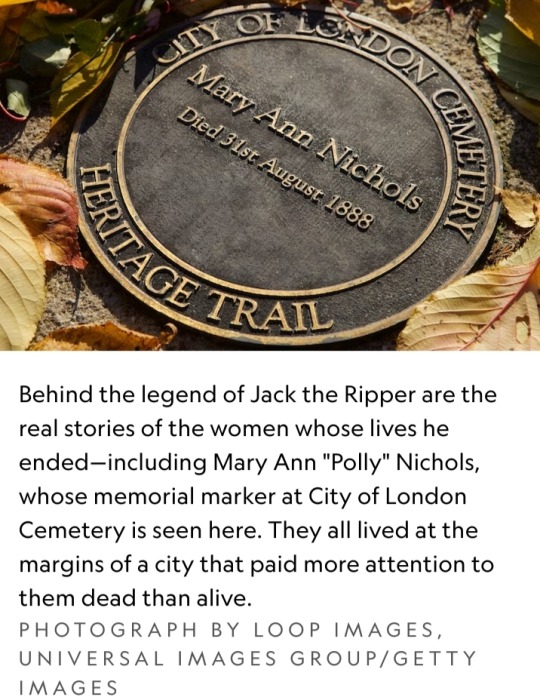
By Parissa DJangi
August 18, 2023
Some say he was a surgeon. Others, a deranged madman — or perhaps a butcher, prince, artist, or specter.
The murderer known to history as Jack the Ripper terrorized London 135 years ago this fall.
In the subsequent century, he has been everything to everyone, a dark shadow on which we pin our fears and attitudes.
But to five women, Jack the Ripper was not a legendary phantom or a character from a detective novel — he was the person who horrifically ended their lives.
“Jack the Ripper was a real person who killed real people,” reiterates historian Hallie Rubenhold, whose book, The Five, chronicles the lives of his victims. “He wasn’t a legend.”
Who were these women? They had names: Mary Ann “Polly” Nichols, Annie Chapman, Elizabeth Stride, Catherine Eddowes, and Mary Jane Kelly.
They also had hopes, loved ones, friends, and, in some cases, children.
Their lives, each one unique, tell the story of 19th-century London, a city that pushed them to its margins and paid more attention to them dead than alive.
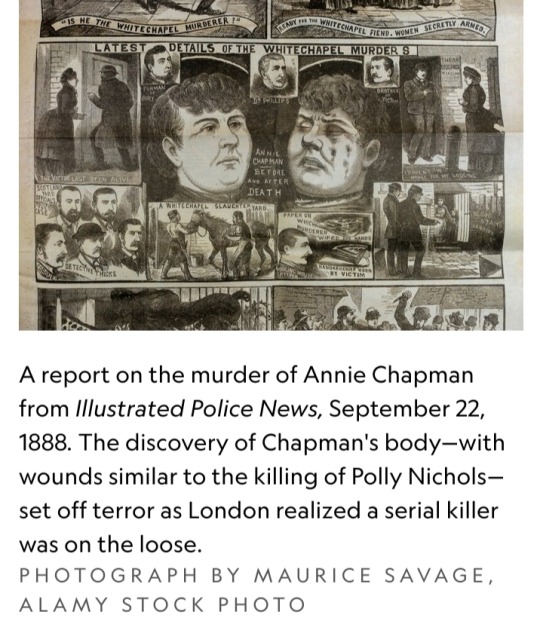
Terror in Whitechapel
Their stories did not all begin in London, but they ended there, in and around the crowded corner of the metropolis known as Whitechapel, a district in London’s East End.
“Probably there is no such spectacle in the whole world as that of this immense, neglected, forgotten great city of East London,” Walter Bessant wrote in his novel All Sorts and Conditions of Men in 1882.
“It is even neglected by its own citizens, who had never yet perceived their abandoned condition.”
The “abandoned” citizens of Whitechapel included some of the city’s poorest residents.
Immigrants, transient laborers, families, single women, thieves — they all crushed together in overflowing tenements, slums, and workhouses.
According to historian Judith Walkowitz:
“By the 1880s, Whitechapel had come to epitomize the social ills of ‘Outcast London,’ a place where sin and poverty comingled in the Victorian imagination, shocking the middle classes."
Whitechapel transformed into a scene of horror when the lifeless, mutilated body of Polly Nichols was discovered on a dark street in the early morning hours of August 31, 1888.
She became the first of Jack the Ripper’s five canonical victims, the core group of women whose murders appeared to be related and occurred over a short span of time.


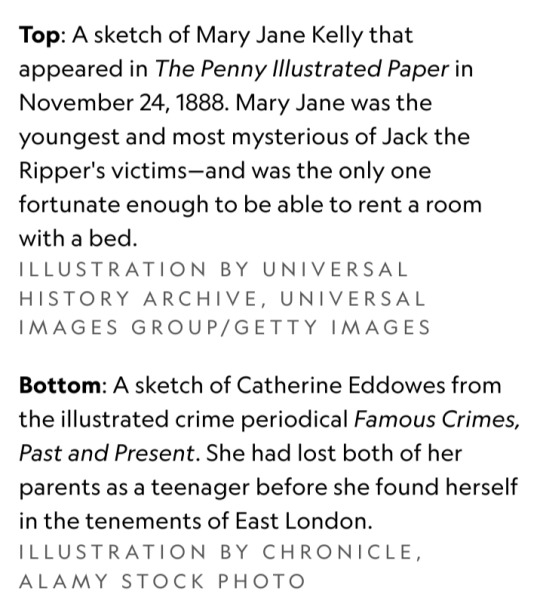
Over the next month, three more murdered women would be found on the streets of the East End.
They had been killed in a similar way: their throats slashed, and, in most cases, their abdomens disemboweled.
Some victims’ organs had been removed. The fifth murder occurred on November 9, when the Ripper butchered Mary Jane Kelly with such barbarity that she was nearly unrecognizable.
This so-called “Autumn of Terror” pushed Whitechapel and the entire city into a panic, and the serial killer’s mysterious identity only heightened the drama.
The press sensationalized the astonishingly grisly murders — and the lives of the murdered women.
Polly, Annie, Elizabeth, Catherine, and Mary Jane
Though forever linked by the manner of their death, the five women murdered by Jack the Ripper shared something else in common:
They were among London’s most vulnerable residents, living on the margins of Victorian society.
They eked out a life in the East End, drifting in and out of workhouses, piecing together casual jobs, and pawning their few possessions to afford a bed for a night in a lodging house.
If they could not scrape together the coins, they simply slept on the street.
“Nobody cared about who these women were at all,” Rubenhold says. “Their lives were incredibly precarious.”
Polly Nichols knew precarity well. Born in 1845, she fulfilled the Victorian ideal of proper womanhood when she became a wife at the age of 18.
But after bearing five children, she ultimately left her husband under suspicions of his infidelity.
Alcohol became both a crutch and curse for her in the final years of her life.

Alcohol also hastened Annie Chapman’s estrangement from what was considered a respectable life.
Annie Chapman was born in 1840 and spent most of her life in London and Berkshire.
With her marriage to John Chapman, a coachman, in 1869, Annie positioned herself in the top tier of the working class.
But her taste for alcohol and the loss of her children unraveled her family life, and Annie ended up in the East End.
Swedish-born Elizabeth Stride was an immigrant, like thousands of others who lived in the East End.
Born in 1843, she came to England when she was 22. In London, Stride reinvented herself time and time again, becoming a wife and coffeehouse owner.
Catherine Eddowes, who was born in Wolverhampton in 1842 and moved to London as a child, lost both of her parents by the time she was 15.
She spent most of her adulthood with one man, who fathered her children. Before her murder, she had just returned to London after picking hops in Kent, a popular summer ritual for working-class Londoners.
At 25, Mary Jane Kelly was the youngest, and most mysterious, of the Ripper’s victims.
Kelly reportedly claimed she came from Ireland and Wales before settling in London.
She had a small luxury that the others did not: She rented a room with a bed. It would become the scene of her murder.
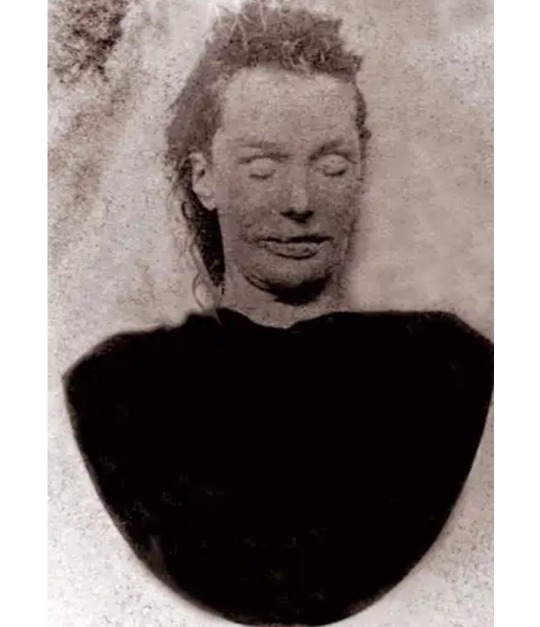
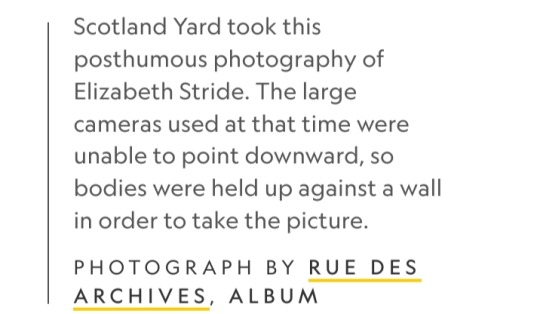
Yet the longstanding belief that all of these women were sex workers is a myth, as Rubenhold demonstrates in The Five.
Only two of the women — Stride and Kelly — were known to have engaged in sex work during their lives.
The fact that all of them have been labeled sex workers highlights how Victorians saw poor, unhoused women.
“They have been systematically ‘othered’ from society,” Rubenhold says,"even though this is how the majority lived.”
These women were human beings with a strong sense of personhood. According to biographer Robert Hume, their friends and neighbors described them as “industrious,” “jolly,” and “very clean.”
They lived, they loved, they existed — until, very suddenly on a dark night in 1888, they did not.
A long shadow
The discovery of Annie Chapman’s body on September 8 heightened panic in London, since her wounds echoed the shocking brutality of Polly Nichols’ murder days earlier.
Investigators realized that the same killer had likely committed both crimes — and he was still on the loose. Who would he strike next?
In late September, London’s Central News Office received a red-inked letter that claimed to be from the murderer. It was signed “Jack the Ripper.”
Papers across the city took the name and ran with it. Press coverage of the Whitechapel Murders crescendoed to a fever pitch.
Newspapers danced the line between fact and fiction, breathlessly recounting every gruesome detail of the crimes and speculating with wild abandon about the killer’s identity.
Today, that impulse endures, and armchair detectives and professional investigators alike have proposed an endless parade of suspects, including artist Walter Sickert, writer Lewis Carroll, sailor Carl Feigenbaum, and Aaron Kosminski, an East End barber.
"The continued fascination with unmasking the murderer perpetuates this idea that Jack the Ripper is a game,” Rubenhold says.
She sees parallels between the gamification of the Whitechapel Murders and the modern-day obsession with true crime.
“When we approach true crime, most of the time we approach as if it was legend, as if it wasn’t real, as if it didn’t happen to real people.”
“These crimes still happen today, and we are still not interested in the victims,” Rubenhold laments.
The Whitechapel Murders remain unsolved after 135 years, and Rubenhold believes that will never change:
“We’re not going to find anything that categorically tells us who Jack the Ripper is.”
Instead, the murders tell us about the values of the 19th century — and the 21st.

#Jack the Ripper#Hallie Rubenhold#The Five#Mary Ann “Polly” Nichols#Annie Chapman#Elizabeth Stride#Catherine Eddowes#Mary Jane Kelly#19th-century#1800s#Whitechapel#London#Walter Bessant#Judith Walkowitz#Outcast London#East End#Autumn of Terror#Victorian society#Victorian era#Robert Hume#1888#Central News Office#Whitechapel Murders#Whitechapel Murderer#Leather Apron#murder#crime#mystery#unsolved case#National Geographic
75 notes
·
View notes
Text

An East End scene: pie and mash shop, a block of flats and a mural of George Lansbury, a former leader of the Labour Party.
This is East India Square in Poplar
#London#Poplar#Eastenders#pie and mash#george lansbury#urban#urban photography#social#housing#flats#East India Square#mural#street art#England#UK#labour party#politics#East End
31 notes
·
View notes
Photo

Capitol & Realtors
19 notes
·
View notes
Text
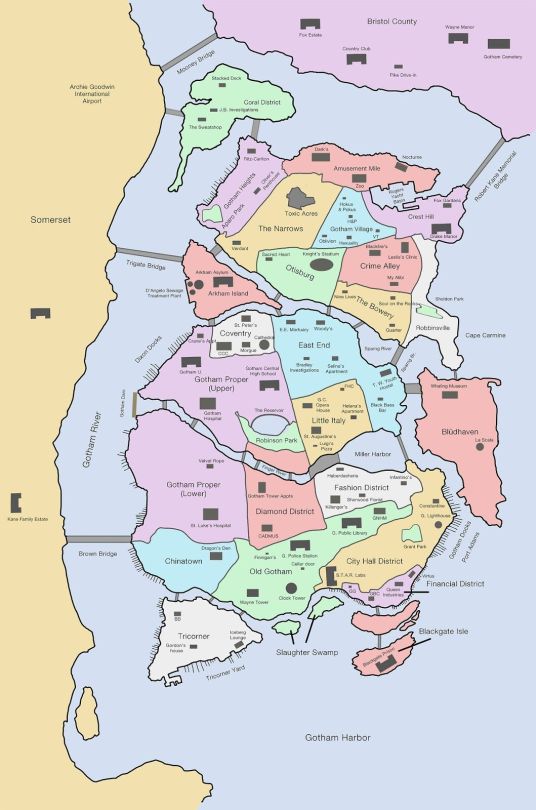
Districts of Gotham City, full layout (sorry you have to zoom in). I went looking for this as a reference & it was the only one that had East End & Wayne Manor!
Originally from here.
(btw, Gotham's usually said to take the place of or be near New Jersey, while Metropolis does the same for New York.)
#admin#writing#reference#batman#dc comics#dc universe#writing reference#gotham city#setting#east end#wayne manor#districts#map#worldbuilding#gotham city map
24 notes
·
View notes
Photo

Bill Brandt. Man sleeping in a coffin. East End Crypt Shelter. 1940
Follow my new AI-related project «Collective memories»
#BW#Black and White#Preto e Branco#Noir et Blanc#黒と白#Schwarzweiß#retro#vintage#Bill Brandt#coffin#East End#Crypt Shelter#1940#London#Blitz#UK#England#1940s#40s#war#guerra#Second World War#World War 2#WW 2#history#historico#histoire#história#Geschichte#記録
32 notes
·
View notes
Text

Day 1991, 5 December 2023
19 notes
·
View notes
Photo


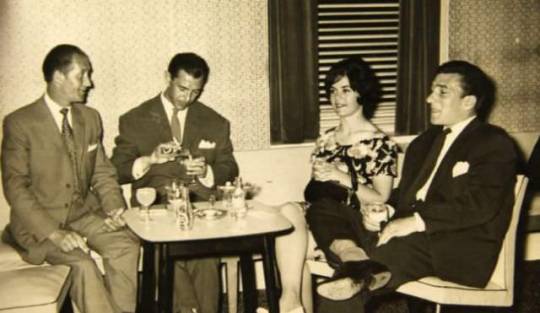
Reggie Kray, his girlfriend Frances Shea and friends in Jersey, May 1960.
“Incredibly, he also took sixteen-year-old Frances on a trip to Jersey in May 1960 in their early days of courtship. They flew there. Of course there’d be sepearate rooms, Reggie assured Frank Senior beforehand, and this was no lie. Frances had no intention of loosing her virginity and her glamorous, free spending older boyfriend was nothing but respectful of this.”
#Frances Shea#frances kray#frances shea kray#Reggie Kray#the kray twins#true crime#true crime research#1960s#gangster#east end
10 notes
·
View notes
Photo









2 bedroom flat for sale on Craigpark Drive, Dennistoun, Glasgow
Asking price: £209,000
Sold price: £265,000
#scotland#real estate#interior#home decor#home decoration#flats#scottish#glasgow#dennistoun#2 bedroom#east end#3/1 28#Glasgow G31 2NP#sold#sold price
33 notes
·
View notes
Text
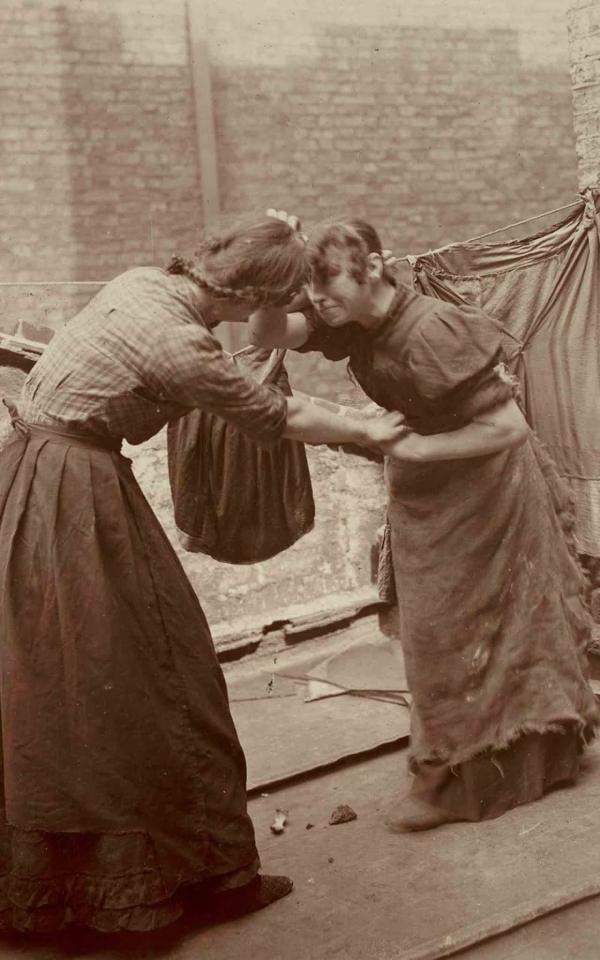
That post is MINE!!! An ordinary day on some tumblrs
Jack London :: Drunken women fighting on a rooftop. London East End, 1902. | Rare Historical Photos
130 notes
·
View notes
Text

A German Heinkel bomber over the East End of London during the Battle of Britain, the Luftwaffe’s air offensive on Great Britain - Aug 1940
#world war two#1940s#worldwar2photos#history#ww2#wwii#ww2 history#wwii era#world war 2#ww2history#aviation#Luftwaffe#heinkel#1940#the blitz#theblitz#london#battle of britain#east end
71 notes
·
View notes
Text

A 19th Century East End knife and scissor sharpener
#vintage photography#East End#knife and scissor sharpener#Old London#Past Times#Ancestors Alive!#What is Remembered Lives#Memory & Spirit of Place
6 notes
·
View notes
Video
Great Arthur House, Golden Lane Estate by John Wolfe
Via Flickr:
London
#Great arthur house#golden Lane#Golden Lane Estate#London#Barbican#Farringdon#East End#Dark#flats#highrise#apartments#tenements#tenement#sinister#council#city#urban#clouds#cloudy#outdoors#estate#orange#grey#block#block of flats#council estate#decay#ugly#cities#capital
3 notes
·
View notes
Photo

Your Success is Our Success
16 notes
·
View notes
Photo

East London Hates Racism, slide, Bethnal Green
#Racism#hate#slide#children's playground#playground#play area#urban#urban photography#graffiti#documentary photography#Bethnal Green#London#East End#england#uk
38 notes
·
View notes
Text
youtube
‘east end’
filmed in amsterdam (2023)
#chester watson#music#art#hip hop#rap#trippy#nu age#smoke#cloud#east end#amsterdam#london#night#architecture#video#fish don't climb trees#fish#pisces#Youtube
5 notes
·
View notes
